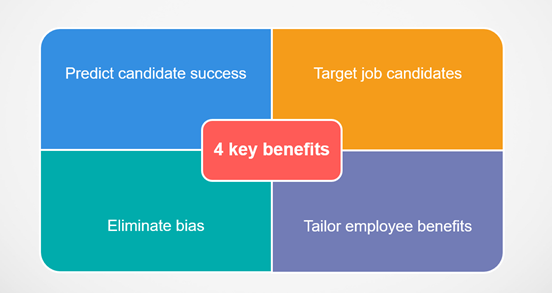
What is Talent Acquisition? Importance of them in Hiring

What is talent acquisition?
Talent acquisition is the process of finding, attracting, and hiring the best candidates to fill the roles required.
What is the difference between recruitment and talent acquisition?
While talent acquisition may sound like a fancier word for recruitment, the two are different approaches to hiring employees.
Recruitment is more concerned with filling vacancies on an immediate basis. This is generally completed in a few weeks. Talent acquisition, on the other hand, is a long-term HR strategy to attract, nurture, and hire the best talent. This approach is often helpful for roles that can be difficult to hire such as leadership roles, executive positions, and any other roles that are most impactful for the business. The competition for acquiring talent is high even in times of recession and these positions can take anywhere from 3 – 6 months to fill. For this reason, talent acquisition is an ongoing process so that when the need arises, you can confidently say – I know just the person for this job! (or at least the prospects you can approach to apply for the job).
Because the process is not rushed, talent acquisition can also help you evaluate the candidate holistically which can increase the retention rate, decrease cost of hire, and increase the quality of hire. This can strengthen the team in the long run.
What is the talent acquisition process?
As mentioned earlier, the process of talent acquisition involves finding, attracting, and hiring candidates. Now let’s take a closer look at each step.
Step 1 – Finding talent
Once the talent acquisition has projected a future need for a role, they should start identifying potential candidates. This is done through networking and building relationships with specialists in the industry. A few ways to go about this include using social media such as LinkedIn/ Facebook groups, attending industry events like conferences, finding candidates through a Boolean search on Google, etc. This process helps you build a strong talent pipeline that your team can tap into.
Depending on your company size and needs, you can track these candidates through a simple Excel sheet or software.
Step 2 – Attracting talent
While compensation plays an important role in attracting talent, talent acquisition specialists offer more than that. Their job is to build an irresistible employee value proposition (EVP). This includes creating a stellar employer brand, offering the right perks and benefits, and creating a strong company culture.
Step 3 – Interviewing, selecting, and hiring talent
This process is similar to the steps followed for recruitment. The interviewing and selection part, however, can involve many stakeholders such as C-suite executives. So, it’s important to have a clear process in place to save time for everyone involved and reduce the time to hire.
The candidate's experience is also a significant part of the process. Talent acquisition professionals should ensure a positive experience for all candidates whether they have been selected or rejected. This ensures that the candidate remains a part of your talent pool. Moreover, candidates who have a positive experience are more likely to recommend your company to others.
Once the talent acquisition has selected a candidate, they also make sure that they create a good onboarding experience. Besides helping the candidates adjust to the workplace, a good onboarding process can increase the retention rate, which is one of the major objectives of talent acquisition.
How to create an effective talent acquisition process?
Now that you know the basics of the talent acquisition process, let’s find out how companies bolster their talent acquisition efforts.
1. Work on your employer's brand
While you may be putting in a lot of work to create a brand to attract customers, you should also be working on your reputation as an employer to attract the best talent. This involves everything that the potential candidates can see about your company as a workplace. For example, Glassdoor reviews, career pages, social media, job descriptions, etc.
An employer brand can serve two purposes in talent acquisition. It will prompt your leads to apply or it can attract the best candidates without your team having to find the potential candidates in the first place.
2. Make it an all-in-this-together exercise
You can introduce employee referral programs to expand your network. If you are hiring for a niche role, you can include that particular department. Otherwise, you can open the program for everyone. This will also help you diversify your talent pipeline.
3. Help your existing employees transition into high-potential roles
Besides external hiring, you can identify employees within your organization who can move into niche roles or leadership positions. You can then provide them with regular mentorship, training, and so on.
If you are looking for fresh talent to join your dynamic team, then you can register and post a job at Career in Nepal. You can choose the subscription plan that suits you. Also, you can post your jobs free at cost with certain criteria.
Pingback: Visit Top 10 Job portal websites







